Local Models!!
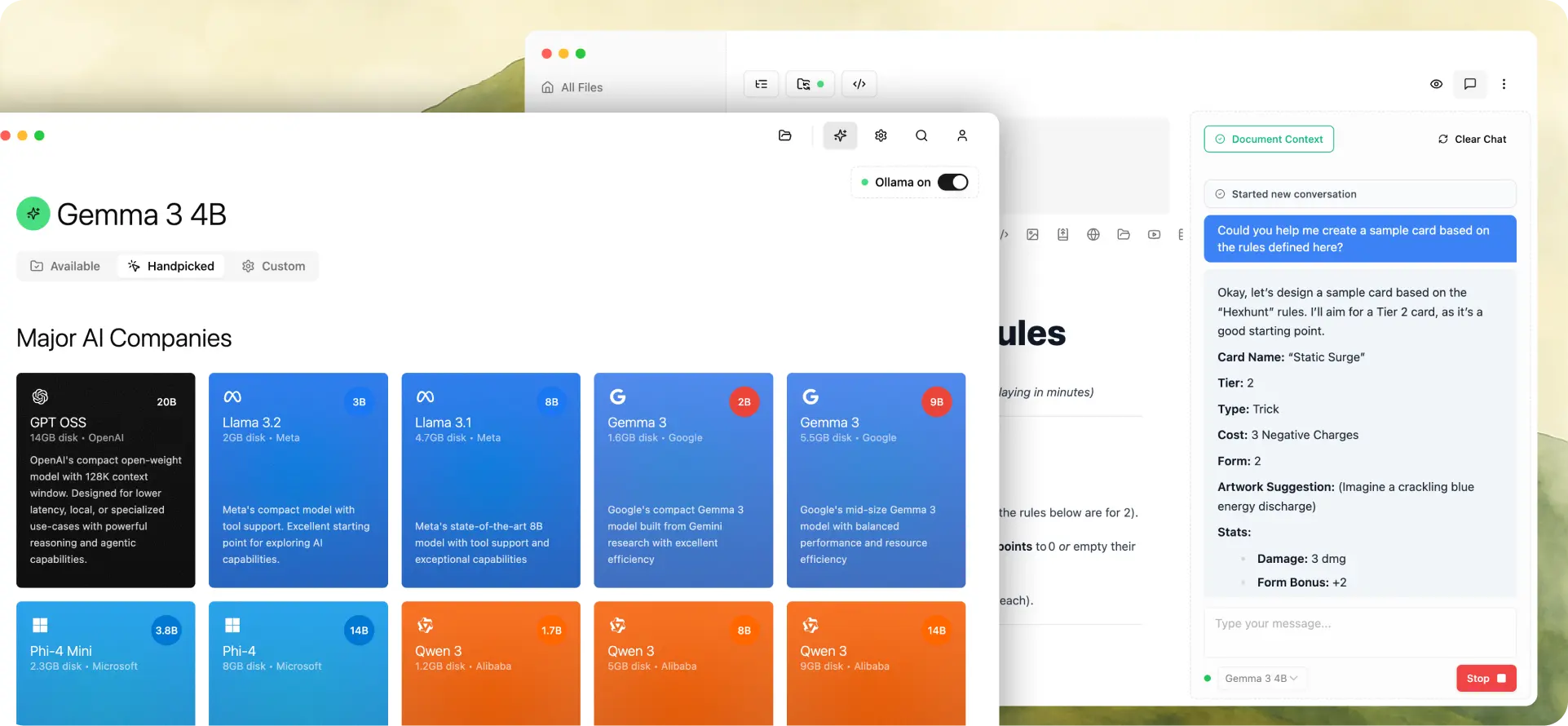
A quick rundown if you are new to all this.
AI in Hillnote has 3 parts to it.
⛺️ Large Language Models (LLMs) are AI systems trained on lots of text. They can understand and create text like humans, allowing them to answer questions, write creatively, and translate languages accurately. They mimic how we communicate. You can switch between a wide variety of AI systems available at ollama.com/search and https://huggingface.co/models?library=gguf&sort=trending
🏕️ The Context: This refers to the information and background the AI uses to best understand your requests and provide relevant answers.
👋🏽 The Prompts represent the specific instructions and tasks you’ll be giving the LLM.
Hillnote uses Ollama, a tool that simplifies working with large language models. Essentially, Ollama provides a local "sandbox" where you can run various AI models. Hillnote lets you access this sandbox, allowing you to experiment with and use different LLMs directly.
You can learn more about Ollama at ollama.com
Configuring your AI
With Hillnote you can go beyond and configure your editor and the built-in AI to work exactly as you need it. You can have multiple models installed in Hillnote and switch between them seamlessly.
Add models
You can add and choose between models in the AI tab. The handpicked tab covers some of my favourite models. You can browse the various sections and hopefully find something you like.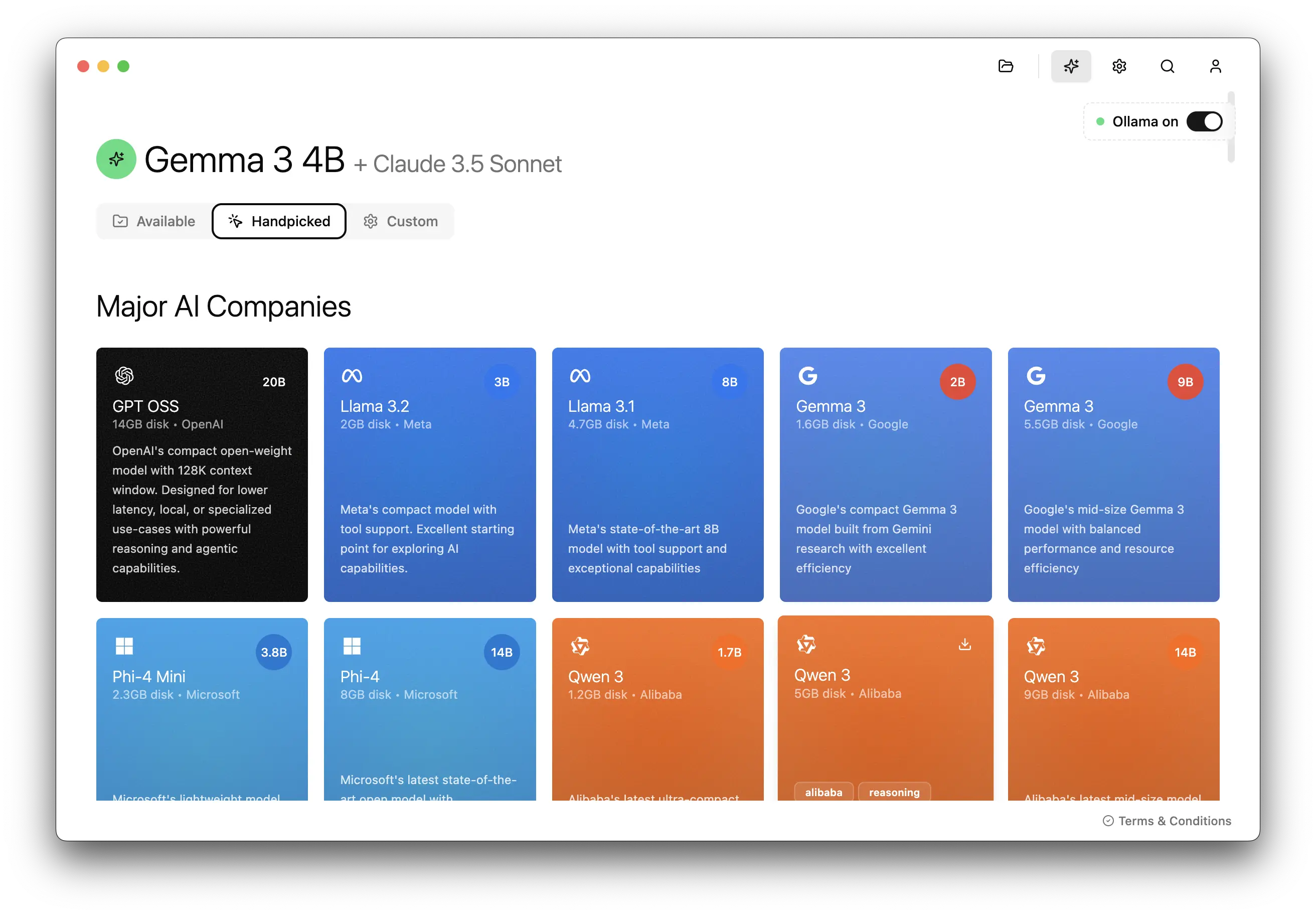
Add more models
Hillnote uses Ollama to run its AI features. Ollama is like a central hub for bringing pre-trained AI models – like Gemma, Phi or Llama – directly to your computer.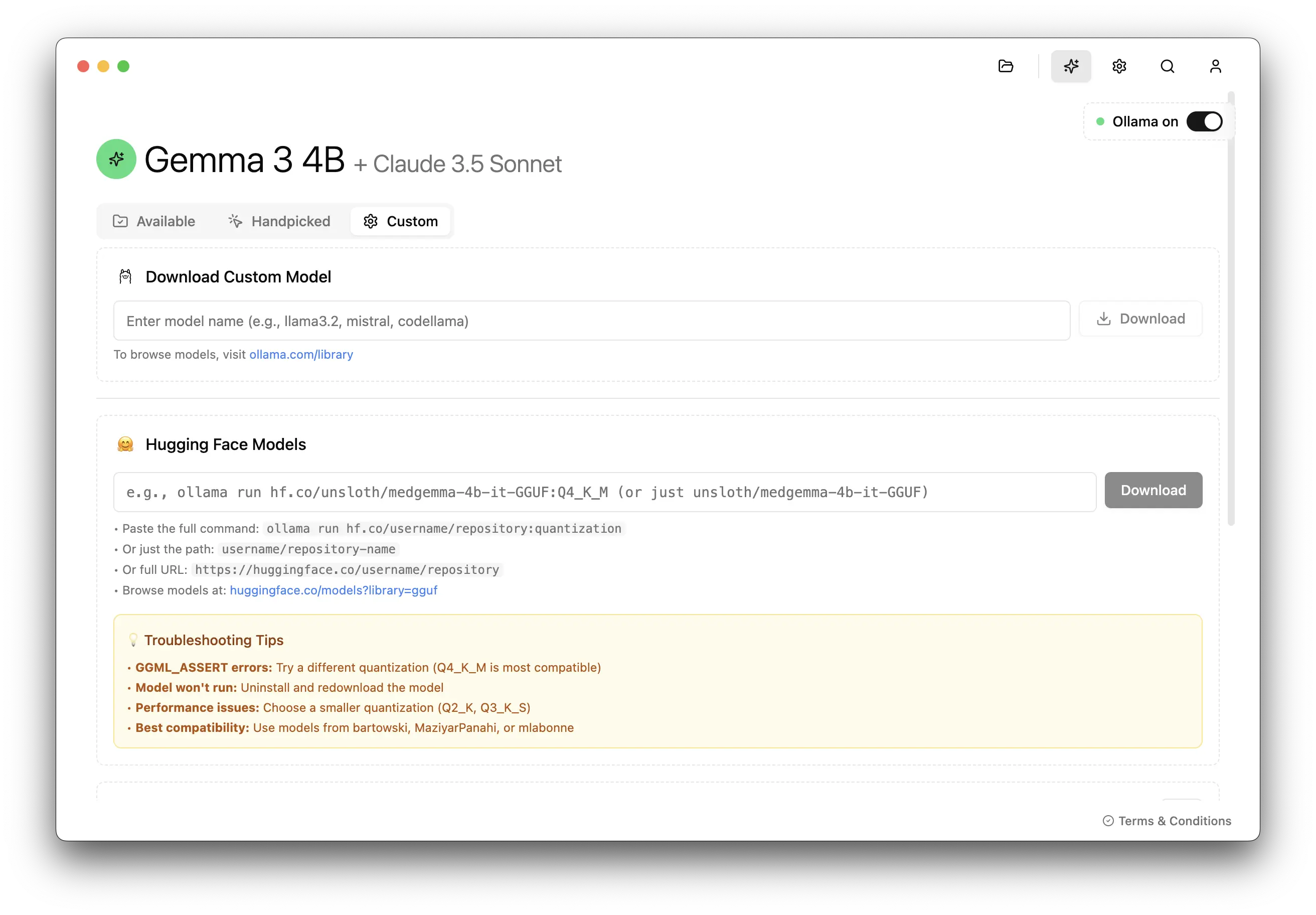
Add models under AI Settings > Custom > Ollama models. Simply type the name as mentioned in ollama.com/search.
Hugging face models
Huggingface.co (Hugging Face) is like a central hub for all things Artificial Intelligence, specifically focusing on language models. Think of it like a giant toolbox filled with pre-trained AI models – these are essentially really smart computer programs that have already learned a ton about language from reading massive amounts of text.
Here’s what makes it special:
Pre-trained Models: They have models that can do amazing things like translate languages, write different kinds of creative content, answer your questions in an informative way, and even summarize text. The cool thing is, you don't have to train these models from scratch – they're ready to go!
Hugging Face Hub: This is their online platform where you can find these models, but also share your own! It's like a GitHub for AI models.
GGUF are formats that allow you to run large language models – like those hosted on Hugging Face – locally on your computer, even if you don't have a super powerful GPU. Think of it like this: Hugging Face provides the brains (the pre-trained model), and GGML/GGUF provides the body – the way to run those brains efficiently.
Add models under AI Settings > Custom > Huggingface models. You can run any GGUF model you find over at huggingface.co/models?library=gguf by entering one of the following
Paste the full command:
ollama run hf.co/username/repository:quantizationOr just the path:
username/repository-nameOr full URL:
https://huggingface.co/username/repository
Switch models
Switch between models under AI settings. The active model denotes which model all the queries will be directed to.

Temperature
Temperature helps determine the models creativity. Lower values (0.0) make the output more focused and deterministic, while higher values (2.0) make it more creative and varied.
Providing Context
Add context
Add context to a prompt from another document by mentioning it using the ‘@’ key. You should see a dialog to help select the document.

Customise your preset prompts
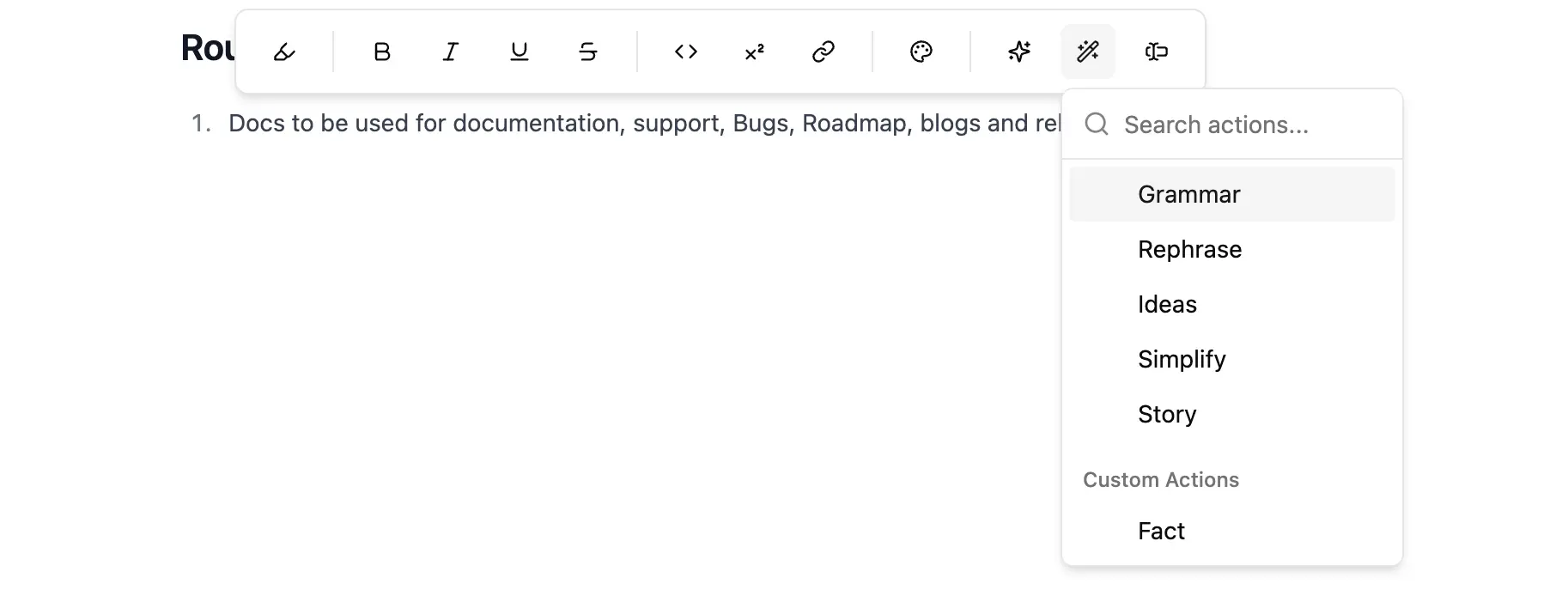 You can custom prompts to the preset list by doing so under settings within custom prompts. These can be tailored to be specific to you.
You can custom prompts to the preset list by doing so under settings within custom prompts. These can be tailored to be specific to you.
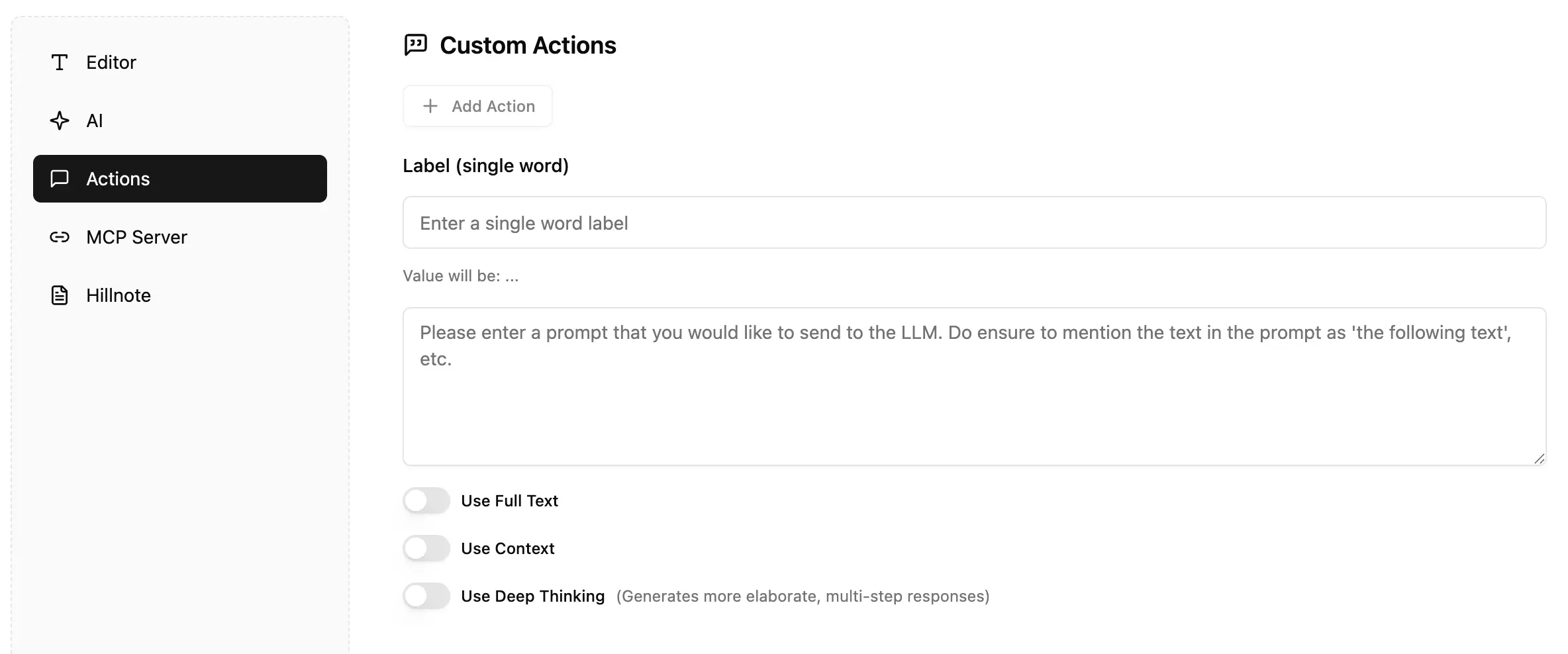
There are a couple of Prompt crafting websites online - do consult with them 🙂
Change the system Prompts
System prompts can be modified within Hillnote settings. This allows you to fundamentally change the Role and the core response structure of the AI model

Add recipes for AI models to understand tasks better
Recipes act as detailed guides that combine multiple elements, such as reference documents and instructions. This structured approach allows you to modify content while capturing specific phrases that provide extra context for consistent usage.1

A quick note on Performance
There is no performance hit from having multiple models installed because only a single model is run at any given time in Hillnote:
Only one model is loaded into memory at a time
Models are stored on disk and only loaded when needed
The Ollama server manages memory efficiently by loading only the active model
When switching models, the previous model is unloaded before loading the new one
Hillnote’s performance depends on your computer’s RAM, GPU and CPU. The ideal LLM size you use is directly tied to your machine’s specifications. While we offer helpful indicators, a good starting point is to consider is the below table
| Model Parameters | Minimum RAM | Recommended RAM | GPU | CPU |
|---|---|---|---|---|
| 1B | 4GB | 8GB | 2GB | Most modern CPU's |
| 3B | 4GB | 8GB | 2GB | Most modern CPU's |
| 4B | 8GB | 16GB | 4GB | Most modern CPU's |
| 7B | 8GB | 16GB | 4GB | Most modern CPU's |
| 8B | 16GB | 32GB | 8GB | Most modern CPU's |
| 10B | 24GB | 48GB | 12GB | High end CPU |
| 20B | 48GB | 64GB | 24GB | High end CPU |
| 70B | 128GB | 256GB | 80GB | Server grade CPU |
Importing and Exporting templates
Export template is an option available under Hillnote settings. This exports all of your AI configurations and files you may have saved. This provides a clean template to then share, Import and use across multiple instances of Hillnote.
The following configurations are exported in a template
Documents (structures and templates)
All custom prompts that have been configured
You can import a template under Hillnote settings.
Author's Notes
The recipe feature described in [1] is still in infancy right now and is being expanded on slowly.
This documentation was built using a hillnote workspace and @hillnote/publish | GitHub